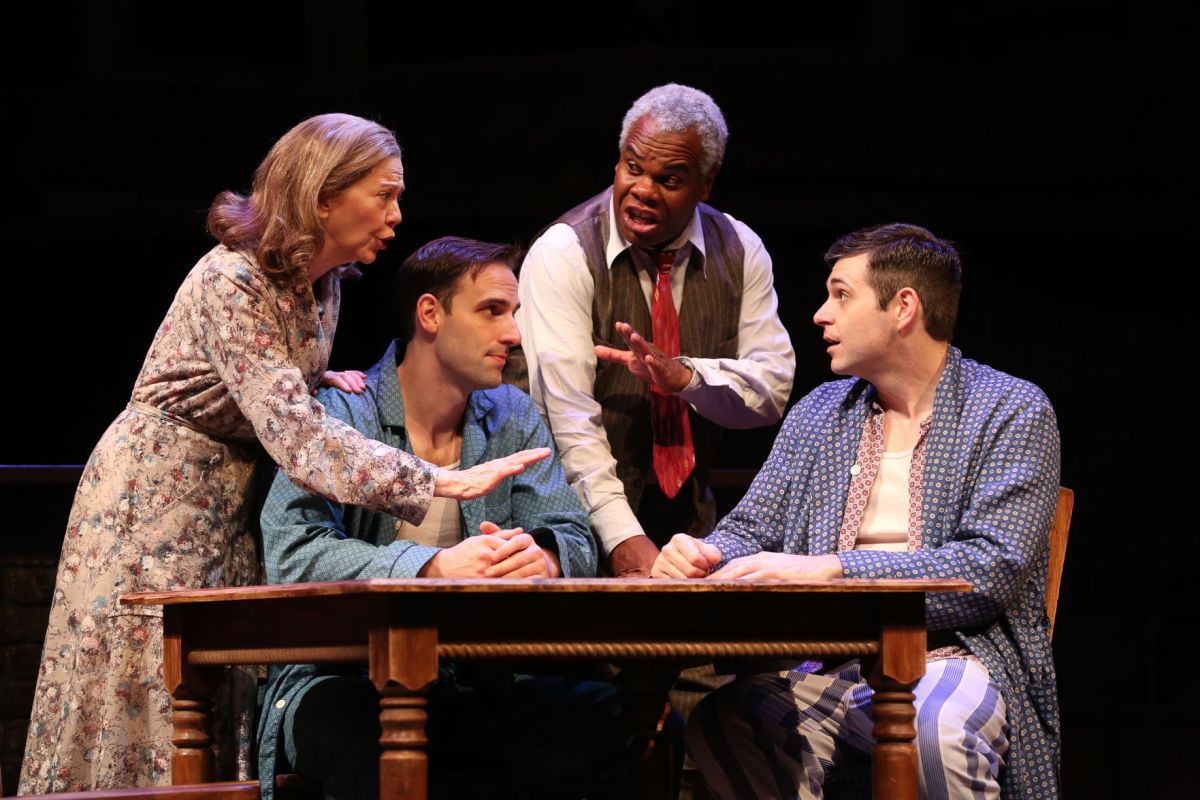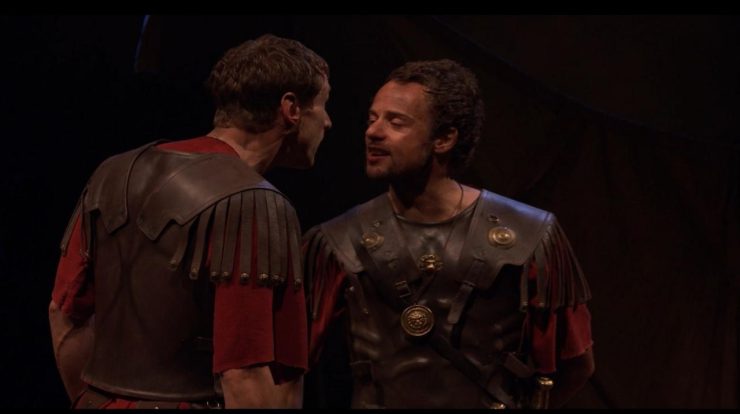Metaphors in Death of a Salesman paint a vivid tapestry, revealing the play’s characters, themes, and message through a kaleidoscope of symbolic language.
The use of metaphors in the play enhances our understanding of Willy Loman’s struggles, the American Dream’s elusive nature, and the complexities of human identity.
Introduction

Arthur Miller’s “Death of a Salesman” is a seminal work in American drama that delves into the themes of the American Dream, identity, and the disillusionment that can accompany the pursuit of success.
Metaphors play a pivotal role in the play, serving as literary devices that illuminate the characters’ inner thoughts, motivations, and the complexities of their relationships. This article aims to analyze the use of metaphors in “Death of a Salesman,” exploring their significance and the insights they provide into the play’s characters and themes.
The Importance of Metaphors in “Death of a Salesman”
Metaphors play a pivotal role in Arthur Miller’s “Death of a Salesman,” enhancing the understanding of characters, themes, and the overall message of the play. They delve into the characters’ inner thoughts, motivations, and experiences, allowing readers to connect with them on a deeper level.
Metaphors and Characterization
Metaphors help illuminate the complex nature of Willy Loman, the protagonist. The “jungle” metaphor portrays his struggle in the competitive business world, while the “ashes” metaphor symbolizes his shattered dreams and failures. Similarly, Biff’s “diamond” metaphor reveals his lost potential and the weight of his father’s expectations.
Metaphors and Themes
Metaphors contribute to the exploration of the play’s themes. The “American Dream” is portrayed as a “death trap,” highlighting its elusive nature and the destructive impact it can have on individuals. The “seeds” metaphor represents the potential for growth and renewal, contrasting with the themes of decay and loss.
Metaphors and Emotional Impact
Metaphors enhance the emotional impact of the play by evoking vivid imagery and creating a sense of empathy for the characters. The “rain” metaphor, for instance, symbolizes Willy’s feelings of despair and isolation, while the “fire” metaphor captures the intensity of his anger and desperation.
Types of Metaphors in the Play
Metaphors are extensively used in “Death of a Salesman” to enhance the play’s themes, characters, and symbolism. These metaphors fall into various categories, including similes, personification, and symbolism, each contributing uniquely to the play’s impact.
Similes
Similes are comparisons using “like” or “as.” In “Death of a Salesman,” similes vividly illustrate characters’ traits and experiences. For instance, Willy’s declining mental state is likened to “a child’s fear in the dark.” This simile effectively captures the vulnerability and confusion Willy experiences as he grapples with reality and delusion.
Personification
Personification attributes human qualities to nonhuman entities. In the play, personification breathes life into abstract concepts, making them tangible and relatable. For example, “the jungle” represents the cutthroat world of business, where Willy feels lost and threatened. This personification amplifies the sense of isolation and desperation Willy faces.
Symbolism
Symbolism assigns deeper meanings to objects, characters, or events. In “Death of a Salesman,” symbols are pervasive and carry significant weight. For instance, the “seeds” Biff plants symbolize hope and the potential for renewal, while the “rubber hose” Willy uses to commit suicide represents his stifled dreams and entrapment.
Analysis of Key Metaphors: Metaphors In Death Of A Salesman
The play “Death of a Salesman” by Arthur Miller is renowned for its extensive use of metaphors that profoundly illuminate character traits, reveal thematic depth, and contribute to the play’s overall message. Here, we delve into a detailed analysis of some of the key metaphors employed in the play.
The Jungle
The recurring metaphor of the jungle pervades the play, representing the harsh and unforgiving world that the characters navigate. For Willy Loman, the jungle symbolizes the cutthroat business world, where he struggles to succeed amidst ruthless competition. For his sons, Biff and Happy, it embodies the challenges they face in finding meaningful purpose and fulfillment in life.
The jungle metaphor underscores the characters’ sense of alienation, isolation, and the constant struggle to survive in a world that seems indifferent to their aspirations.
The American Dream
The American Dream, a central theme of the play, is also explored through metaphors. Willy’s pursuit of success and wealth is portrayed as a “rat race,” a relentless chase that ultimately proves futile. The “diamond mine” that Willy believes exists in Alaska symbolizes the elusive nature of his dreams and the false promises that society holds out to those who aspire to material wealth.
The Garden
In contrast to the harshness of the jungle, the garden represents a place of peace, tranquility, and connection with nature. Willy’s backyard garden serves as a refuge from the pressures of the outside world, where he can find solace and escape the disappointments of his life.
The garden also symbolizes the possibility of renewal and rebirth, as seen in the image of the planted seeds that Willy hopes will grow and flourish.
The Role of Metaphors in Characterization
Metaphors play a crucial role in shaping and revealing the characters in “Death of a Salesman.” They delve into the characters’ innermost thoughts, motivations, and struggles, providing profound insights into their complex psyches.
Willy Loman: The Seeds of Self-Deception
Willy’s self-deception and illusions are vividly portrayed through metaphors of farming and nature. His belief in the “seeds” of success reflects his desperate desire to find purpose and fulfillment in his life. However, the “rotten seeds” of his unrealistic expectations ultimately lead to his downfall.
Metaphors and Symbolism
In “Death of a Salesman,” metaphors and symbolism are intertwined, enriching the play’s themes and meanings. Metaphors create vivid imagery and evoke emotions, while symbols embody abstract concepts and resonate throughout the narrative.
Metaphors often lay the foundation for symbols. For instance, the “jungle” metaphor, referring to the competitive business world, becomes a symbol of the harsh realities and struggles faced by Willy Loman. Similarly, the “seeds” metaphor, representing Willy’s hopes and dreams, transforms into a symbol of his shattered aspirations and unfulfilled potential.
Metaphors Contributing to Symbols
- The “rubber hose” as a symbol of Willy’s suppression and confinement.
- The “false teeth” as a symbol of Willy’s decaying self-esteem and lost illusions.
- The “tape recorder” as a symbol of the intrusive memories and regrets that haunt Willy.
Symbols Enhancing Themes and Meanings
- The “American Dream” symbol highlights the unattainability and destructive nature of materialistic pursuits.
- The “family” symbol explores the complexities of relationships and the impact of failed expectations.
- The “memory” symbol delves into the power of recollection and the ways it shapes our present and future.
The Impact of Metaphors on the Play’s Themes
Metaphors play a pivotal role in reinforcing and developing the major themes of “Death of a Salesman.” They illuminate the complexities of the American Dream, the struggle for identity, and the elusive nature of success, enhancing the play’s insights into human nature.
The American Dream
The play’s metaphors vividly capture the allure and pitfalls of the American Dream. Willy Loman’s obsession with success is symbolized by the “jungle” of the business world, where he feels lost and devoured. The “seeds” of his dreams, planted in his sons, fail to bear fruit, highlighting the elusive nature of the American Dream.
Identity
Metaphors explore the characters’ struggles with identity and self-worth. Willy’s shattered self-image is reflected in the “mirror” of his past failures. Biff’s search for purpose is symbolized by his “football dream,” which ultimately turns into a bitter realization of his own limitations.
Success, Metaphors in death of a salesman
The play uses metaphors to question the conventional notions of success. Willy’s pursuit of material wealth is juxtaposed with the true success found in relationships and personal fulfillment. The “rubber hose” that symbolizes his false hope ultimately becomes a symbol of his despair.
Conclusion
In conclusion, the analysis of metaphors in “Death of a Salesman” reveals their profound impact on the play’s characters, themes, and enduring relevance. Metaphors provide a lens through which we can explore the complexities of the human condition and the struggles faced by individuals in a rapidly changing world.
The significance of metaphors in “Death of a Salesman” cannot be overstated. They serve as a powerful tool for characterization, illuminating the inner thoughts and emotions of the characters. They also enhance the play’s symbolism, allowing for deeper interpretations and connections between the characters and their surroundings.
Implications of the Analysis
The analysis of metaphors in “Death of a Salesman” has implications for our understanding of the play and its enduring relevance. By examining the metaphors, we gain a deeper appreciation for the playwright’s craft and the complexities of the human experience.
The play continues to resonate with audiences today because it explores universal themes of loss, disillusionment, and the pursuit of the American Dream.
User Queries
What is the significance of the “seeds” metaphor in the play?
The “seeds” metaphor symbolizes Willy Loman’s hope for a successful future, representing his belief that his efforts will bear fruit despite his present struggles.
How does the use of personification contribute to the play’s themes?
Personification, such as when Willy addresses the refrigerator as “the beast,” reflects his feelings of isolation and alienation, highlighting the dehumanizing effects of the modern world.
